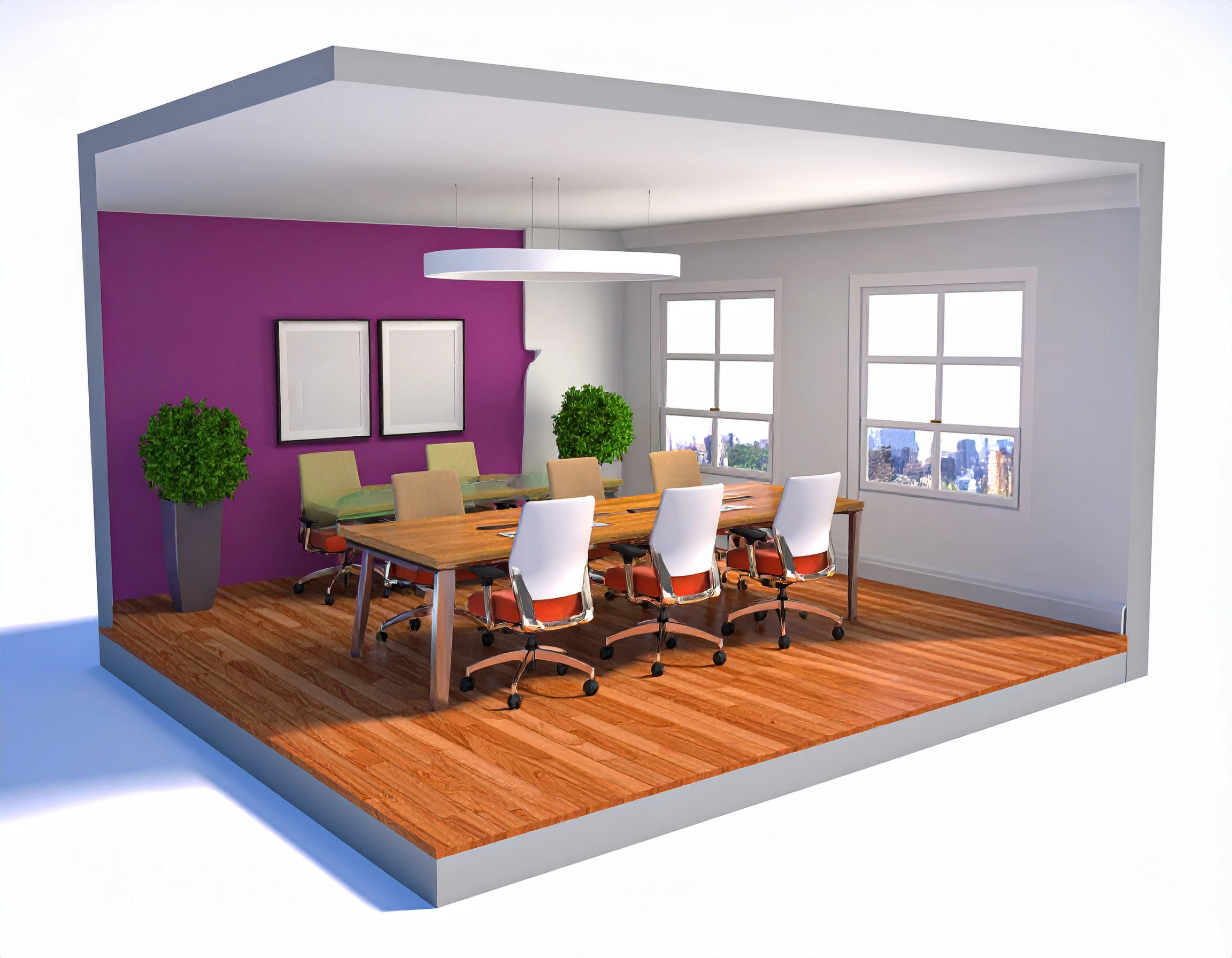Try-Before-You-Build: How Virtual Staging Software Is Revolutionizing Commercial Real Estate
Real estate is going digital. Read how virtual staging helps buyers visualize spaces and improves listing performance.
Key Takeaways:
- Virtual staging adds digital decor to real estate visuals using software.
- It's faster, cheaper, and more flexible than traditional staging.
- Staged visuals improve buyer interest and help decision-making.
- Tools include 3D modeling, digital staging platforms, and AR walkthroughs.
- Use cases include residential previews, commercial space layouts, and virtual tours.
- Technologies like AR, 3D virtual showrooms, and immersive design make experiences lifelike.
- Staging is scalable and ideal for pre-construction marketing.
- KiXR offers end-to-end support for interactive real estate visualization
Marketing real estate has changed. Photos alone don't sell. Buyers and tenants want to see what a space can become.
This is where virtual staging software makes a difference. It helps real estate developers, brokers, and landlords show furnished versions of empty spaces. All digitally, without bringing in real furniture.
Whether it's a home, an office, or a retail outlet, virtual staging helps clients make faster and better decisions.
In this blog, we'll explain how digital staging platforms work, why they're useful, and how they add value to both residential and commercial listings.
What is the Meaning of Virtual Staging?
Virtual staging is the process of adding digital furniture, decor, lighting, and materials to an image or 3D model of a real property.
It helps visualize how an empty space might look once set up. This can be used for homes, offices, or under-construction spaces.
In real estate, a virtual property is a space shown with staged digital content instead of physical items.
Unlike traditional staging, there's no transport or setup involved. Everything is created using specialized software.
How is Virtual Staging Done?
The process starts with high-quality photos or 3D models of an empty space. These images are uploaded into a digital staging platform or architectural visualization tool.
Designers or AI tools then place digital items into the space. This includes chairs, desks, sofas, rugs, lighting, or even wall textures.
Once complete, the staged image or video is exported. These visuals can be added to real estate listings, presentations, or virtual tours.
Some tools also support changes based on user input. This includes switching layouts or viewing multiple styles.
Benefits of Virtual Staging and How It Is Different from Traditional Staging
Virtual staging differs from traditional staging in several ways. Here are six common points:
- Cost savings: No need to rent or move physical furniture. No transport or labor charges.
- Speed: Digital staging can be done in hours. Physical staging takes days.
- Flexibility: One space can be shown in many styles. You can stage it as an office, café, or retail outlet.
- Realism: Tools now offer photorealistic textures, lighting, and shadows.
- Scalability: A real estate agency can stage hundreds of listings at once. Physical staging cannot do this.
- Sustainability: No waste, no logistics, no leftover materials.
Additionally, with virtual staging, developers can even stage properties that are under construction or in shell condition. This makes it ideal for pre-construction visualization and early-stage sales and marketing.
Tools and Technologies Used for the Process
Several types of tools work together for effective staging and visualization.
- Virtual staging software: Used to design staged images or scenes. It handles object placement, scale, and lighting.
- Architectural visualization tool: Creates detailed 3D renderings of entire buildings or layouts. Often used in pre-launch projects.
- Digital staging platform: These are web-based or downloadable tools made specifically for staging. They come with libraries of furniture, decor, and layouts.
- 3D virtual showroom: Offers a walkable, interactive version of the space. Clients can explore it on a screen or headset.
- Immersive space design tools: These add scale, motion, and depth to a design. They help users feel what a space might look or feel like in reality.
How AR, 3D Virtual Showrooms, and Immersive Space Design Change the Game
AR staging solutions make it possible to view staged interiors through a mobile device in real time. When standing inside an empty space, a user can simply lift their phone or tablet and see a fully furnished layout appear on their screen.
This helps marketers show the potential of unfinished or bare properties without needing a physical setup. Clients no longer have to imagine the possibilities. They can see them clearly, through their own device, on the actual site.
3D virtual showrooms allow full walk-throughs. These are often used for luxury real estate or premium commercial listings. Clients can walk through the entire layout virtually.
Immersive space design adds to the overall experience by making it more lifelike. Users can explore, adjust the lighting, or switch between layout options.
Together, these technologies make space feel more accessible and tangible even when viewed from a screen. They support real estate marketing by reducing guesswork, increasing engagement, and helping clients connect with a property visually before making a decision.
Use Cases of Virtual Staging Technology in Real Estate Marketing
Virtual staging is essential in real estate, especially in the present times when technological advancements are bringing a change in traditional methods. Here are three core use cases of this technology in real estate marketing:
1. Real Estate Visualization for Residential and Commercial Property
Virtual staging helps show apartments, villas, or office buildings in their best light. It builds buyer confidence and improves conversion rates.
You can stage every room differently or offer layout options for different types of buyers.
Developers also use it to show how a building will look before it is built. This then allows pre-construction visualization.
2. Office Space Walkthrough
Commercial leases require careful planning. Tenants want to see how workstations, meeting rooms, and breakouts will fit.
Therefore, an office space walkthrough is what resolves these queries because developers can digitally showcase entire floor layouts, thus allowing tenants to review all factors with the help of the commercial virtual staging process. This reduces time in the sales cycle and increases trust.
3. Virtual Property Tour
Staging is most effective when paired with full virtual property tours. Here, users don't just see still images. They walk through the property in a web browser, mobile device, or headset. They can move from room to room, zoom in, and explore design elements.
What does this mean for real estate today?
Virtual staging is now a part of mainstream real estate marketing. It makes listings feel real, helps clients imagine possibilities, and speeds up decision-making. Virtual staging helps 83% of buyers visualize a property better, increasing their interest in the listing.
As tools become easier to use, even small agencies and mid-scale developers are adopting them. Whether it's a virtual property, a commercial property tour, or a 3D virtual showroom, staging adds value and clarity.
Bring Your Spaces to Life with KiXR
KiXR offers a complete solution for digital staging and interactive real estate experiences. It supports virtual staging software, 3D modeling, and browser-based walkthroughs. Whether you're looking to create a commercial property tour, offer a 3D virtual showroom, or design an immersive space, KiXR helps bring your spaces to life. Contact us to discover how our services can benefit your project.
FAQs (Frequently Asked Questions)
What is the meaning of virtual staging?
It is the process of adding digital furniture and design to a real space using software. It helps clients visualize how a property will look when set up.
In what ways can virtual staging be used in real estate ads?
Virtual staging can show furnished views of empty properties in photos, 360° tours, or videos. It makes the listing look complete and helps buyers imagine living or working there.
What is the difference between real staging and virtual staging?
Real staging uses physical furniture and requires setup. Virtual staging uses software to design rooms digitally. It is faster, cheaper, and more flexible.
What is a virtual property?
A virtual property is a real estate listing presented with digital staging or interactive 3D views. It may be shown online before the physical space is ready.
Which software is best for architectural visualization?
Some popular architectural visualization tools include Lumion, Twinmotion, and Unreal Engine. These tools create realistic 3D models for planning and marketing.
Kavita has been adept at execution across start-ups since 2004. At KiKsAR Technologies, focusing on creating real life like shopping experiences for apparel and wearable accessories using AI, AR and 3D modeling


